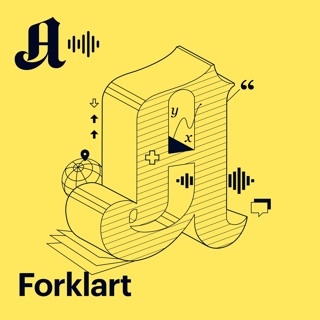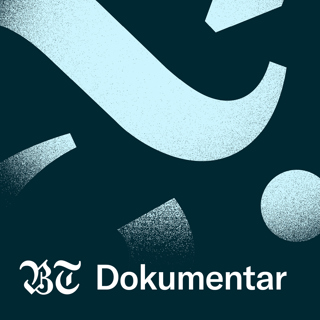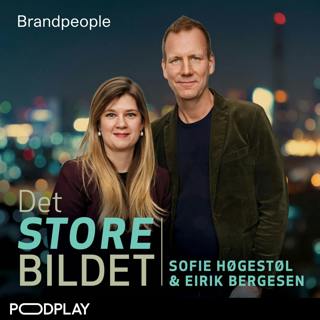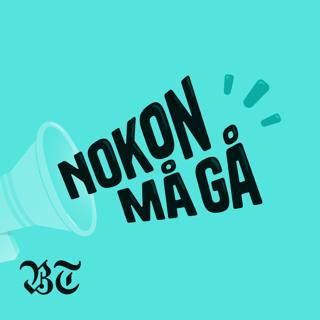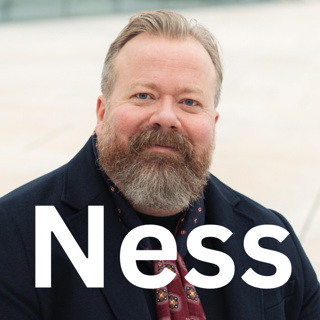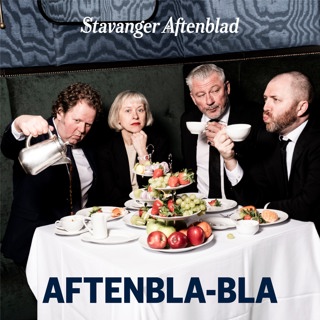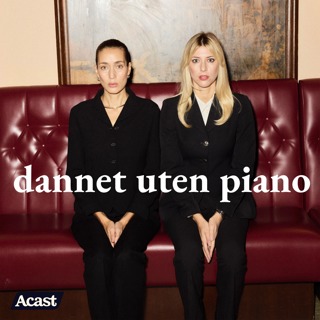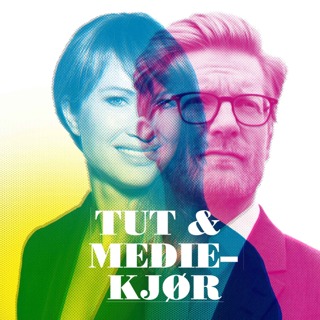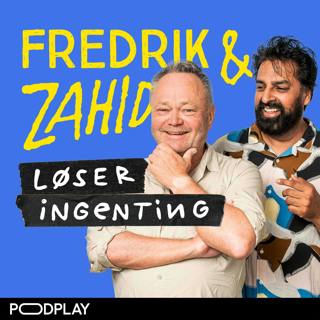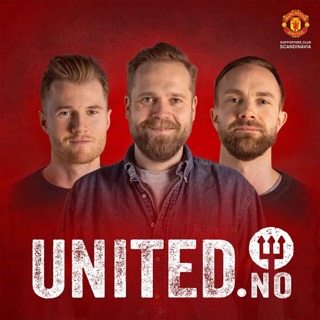
Navigating Fashion's Disruptive Landscape: Tech, Trade, and Trendsetters in 2025
The global fashion industry has entered August 2025 navigating a complex and rapidly changing landscape. In the past 48 hours, industry headlines have been dominated by major events, emerging trends, and immediate challenges. One of the most discussed topics is the backlash over AI-generated model ads in Vogue and Guess campaigns, with critics on social media decrying the absence of real models and the perceived threat to photographers and traditional modeling jobs. This controversy highlights the larger debate about authenticity and technology in branding as leading companies test the boundaries of digital content and its impact on consumer engagement[3][7].Market disruptions are intensifying as American trade policy uncertainty and new tariffs place significant pressure on supply chains. According to the American Apparel & Footwear Association, continued high tariffs from major sourcing countries are forcing brands to rethink pricing, with warnings of potential job cuts and narrower product ranges. Retail executives are advancing contingency plans, expecting product shortages, delayed shipments, and likely price hikes for the fall season[6]. This situation exacerbates consumer anxiety just as back-to-school and autumn shopping drive sales.Events like the Coast Collective Super Show and NY NOW are critical platforms this week, enabling buyers and brands to build partnerships, showcase new launches, and spot cutting-edge trends. Attending brands are highlighting sustainability, luxury personalization, and localized storytelling while offering exclusive capsule collections and digital integrations[1][4][8]. In parallel, sustainability remains a strategic priority for both established and rising brands. Citizen Wolf’s new sizing technology and DAWN Denim’s retail fit initiatives exemplify efforts to reduce product waste and boost consumer confidence, directly responding to demand for ethical production and enduring quality[5].Recent reporting shows a tangible shift in consumer sentiment. Customers are increasingly valuing customization, transparency, and long-lasting products, leading to the rise of one-of-a-kind luxury pieces and garments designed for longevity rather than fast fashion turnover[1][5]. Compared to last quarter’s optimism about AI-powered supply chains and seamless e-commerce, the mood now is more cautious, with companies preparing for continued volatility in both costs and global trade.In summary, fashion leaders are focusing on operational agility, innovative partnerships, and brand authenticity to weather ongoing disruptions. How brands navigate the balance between technology, tradition, and shifting economic realities will define the next chapter in fashion.For great deals today, check out https://amzn.to/44ci4hQThis content was created in partnership and with the help of Artificial Intelligence AI
4 Aug 3min

"Fashion's Evolving Landscape: AI, Personalization, and Shifting Consumer Trends"
The global fashion industry has seen major developments in the past 48 hours, defined by bold experimentation, evolving consumer preferences, and technological disruption. One of the most debated shifts was the backlash sparked by Vogue’s July print edition, which featured an AI-generated model in a major advertisement. This move triggered debate among designers, models, and consumers about authenticity in fashion. While some high-end brands are quietly testing AI modeling technology, the reaction will likely shape future uses of artificial intelligence across fashion advertising, casting, and content production[3].On the business side, luxury brands continue to emphasize personalization. Recent product launches in August underscore a return to heritage and craftsmanship, with capsule collections and limited-edition pieces aimed at deepening emotional connections with customers. For instance, LILYSILK debuted its Fall 2025 “Understated Strength” collection, focusing on refined fabrics and handcrafted elements[1].Market momentum is also driven by regional and cultural influences. Chicago Fashion Week, currently underway, highlights an increased appetite for local designers, African-inspired fashion, and community-driven runway events[4]. Meanwhile, in Europe, the SCHICK trade fair in Salzburg merges apparel, footwear, and accessories, offering a centralized international platform for sourcing and trend forecasting[8].Supply chain resilience remains a priority for American brands. Industry groups report renewed investment in domestic manufacturing as brands adapt to shifting policies and global uncertainties. As a result, U.S. textile and sewn product leaders project cautious optimism, prioritizing innovation and onshoring strategies to ensure reliability and sustainability in sourcing and production[2].Among younger consumers, there is a pronounced shift toward affordable, expressive fashion driven by Gen Z. K-pop inspired airport styles spotlight comfort, individuality, and utility over prominent logos, signaling a move away from overt branding to accessible chic as evidenced by widely shared looks from global music stars[5].Overall, the fashion industry’s current state is defined by rapid adoption of new technologies, increased focus on storytelling and craftsmanship, and a notable change in consumer priorities toward authenticity, locality, and sustainability compared to previous quarterly reporting. These shifts will likely inform the strategies and product offerings of industry leaders in the weeks ahead.For great deals today, check out https://amzn.to/44ci4hQThis content was created in partnership and with the help of Artificial Intelligence AI
3 Aug 2min

Fashion Industry Adapts to Regulatory Changes, Seasonal Shifts, and Economic Uncertainty
Over the past 48 hours, the fashion industry is showing both resilience and adaptation as it navigates new regulatory realities, seasonal shifts, and continued economic uncertainty. In New York, the recent enactment of the Fashion Workers Act has ushered in mandatory compliance requirements for hiring and managing talent, signaling a legal makeover for an industry long perceived as unregulated, especially for models and creatives. Industry leaders are now scrambling to adjust their contracts and practices to align with these new rules, with legal experts warning that those who fail to comply will face significant penalties[1].On the product front, several brands are launching summer collections and limited-time collaborations. Notably, LIÉ Studio and Lido Swim have debuted an exclusive Italian-made swimwear line featuring gemstone detailing, targeting both beachgoers and fashion-conscious urbanites. Dear Frances also introduced a mesh tote, expanding their accessories range to match their popular ballet flats. These launches reflect a push to capitalize on the start of summer and renewed consumer interest in travel and outdoor activities[2]. Meanwhile, jewelry brand Awe Inspired is marking Pride Month with a campaign featuring Kim Petras and donating proceeds to support LGBTQ+ students, indicating a continued focus on social responsibility and inclusivity[2].The market outlook remains cautious, echoing the tempered growth projections reported in recent months. The McKinsey State of Fashion 2024 notes that while the industry recovered its economic profit levels post-pandemic, growth is now slowing, especially outside the luxury segment. Consumer savings are down, inflation persists, and geopolitical tensions add to executive uncertainty. However, some brands and segments—particularly those investing in sustainability and innovation—are finding pockets of opportunity. For instance, Chanel’s launch of the Nevold platform, focused on scaling recycled materials for a range of products, signals a shift toward circular fashion as a response to both regulatory pressures and changing consumer values[3][5].Compared to the previous reporting periods, the industry is reacting more proactively to regulatory changes, with leaders prioritizing compliance, product innovation, and sustainability. Price sensitivity among consumers is prompting brands to offer both premium and accessible options, while supply chain disruptions from previous years have given way to more localized and flexible sourcing strategies. Overall, the fashion sector is proving adaptable, even as external pressures and shifting consumer behaviors continue to redefine the landscape[3][5].This content was created in partnership and with the help of Artificial Intelligence AI
13 Jun 2min

Fashion's Evolving Landscape: Retail Reinvention, Sustainability Strides, and Shifting Consumer Demands
The fashion industry is entering mid-June 2025 in a state of rapid transformation and cautious optimism. Over the past 48 hours, the sector has witnessed notable developments, driven largely by ongoing market volatility, evolving consumer behaviors, and significant launches.Recent retail activity includes Celine’s flagship opening in Sydney, emphasizing experiential in-store design and integration with contemporary art. Meanwhile, Bottega Veneta is celebrating 50 years of its signature Intrecciato weave with a high-profile campaign featuring global icons. These moves reflect a continued emphasis on brand storytelling and immersive retail experiences to attract discerning shoppers. The jewelry sector is also seeing innovation, with Chaumet unveiling a modern take on their classic Bee de Chaumet collection, aiming to capture younger audiences[2].On the product front, new summer collaborations like the LIÉ Studio and Lido Swim exclusive swimwear collection are hitting the market, while brands such as Dear Frances are releasing novel accessories, including mesh totes targeting the hybrid functionality trend. In a nod to inclusivity and social responsibility, companies like Awe Inspired have launched Pride Month campaigns, donating a portion of proceeds to LGBTQ+ organizations[1].Industry leaders are increasingly prioritizing sustainability. Chanel’s new venture, Nevold, is dedicated to developing recycled materials for luxury goods, from tweed to leather, marking a significant pivot towards circular fashion. Chanel’s recycled materials are already appearing in runway collections, setting a benchmark for peers[3].Fashion shows remain pivotal, with Milan and Paris Men’s Fashion Weeks kicking off later this month, expected to set global trends for Spring and Summer 2026. Berlin’s Fashion Week will focus on sustainability and activism, highlighting continued momentum toward ethical production[3].Consumer behavior is shifting with shoppers seeking unique products, ethical sourcing, and exclusivity. Economic uncertainty persists, but luxury remains more resilient than the broader apparel market. No major regulatory changes have emerged this week, but sustainability standards and transparency expectations continue to intensify.Compared to previous reporting, the current climate reflects steady innovation amid macroeconomic headwinds. Supply chains are largely stable, though brands remain vigilant about geopolitical risks. The coming weeks will likely see further realignment as brands respond to new collections, sustainability pressures, and evolving customer expectations[1][2][3].This content was created in partnership and with the help of Artificial Intelligence AI
12 Jun 2min

Fashion Industry Trends Shaping 2025: Retail Expansion, Collabs, and Sustainability Spotlight
Fashion Industry Update: Early June 2025The fashion landscape continues its dynamic evolution in the first half of June 2025, with significant movement across retail, creative leadership, and seasonal showcases.Major fashion houses are strategically expanding their retail footprint, with Celine recently unveiling a new 210-square-meter boutique at Sydney's Westfield Bondi Junction. The space features a Grand Antique marble façade and showcases Australian artists Elizabeth Newman and Augusta Vinall Richardson as part of the Celine Art Project[2].Industry partnerships continue to generate buzz, with Balenciaga announcing a final collaborative collection with Britney Spears that promises to be genre-defying[2]. Meanwhile, Bottega Veneta is celebrating five decades of their iconic Intrecciato weave with a powerful new campaign featuring Julianne Moore and Tyler, the Creator[2].In the sustainability arena, Berlin Fashion Week (June 30-July 3) is poised to spotlight eco-conscious innovation and activism, signaling the industry's continued focus on environmental responsibility[3].The luxury accessories market shows creative momentum with unconventional offerings like Crocs x Swarovski crystal-studded clogs and Panera Bread's croissant-inspired clutch bag making headlines[4]. In the jewelry sector, Chaumet is reimagining their icon with the new Bee de Chaumet collection[2].June marks the start of fashion's summer sprint, with Milan Men's Fashion Week (June 20-24) and Paris Men's Fashion Week (June 24-29) set to showcase Spring/Summer 2026 collections from the world's most prestigious houses[3]. These events will establish the menswear direction for the coming year.The industry continues to balance heritage with innovation, as seen in fashion publication Acne Paper celebrating its twentieth anniversary this month with a special gold-themed issue[3]. This milestone highlights the enduring importance of print media alongside digital transformation in fashion communication.As we approach the halfway mark of 2025, the fashion calendar shows no signs of slowing, with creative collaboration and retail innovation driving the industry forward.This content was created in partnership and with the help of Artificial Intelligence AI
11 Jun 2min

Fashion's Adaptive Momentum: Navigating Uncertainty with Innovation and Sustainability
In the past 48 hours, the fashion industry has been defined by a surge of innovative launches, strategic collaborations, and ongoing uncertainty in global markets. June opened with a focus on seasonal transitions and standout new releases. Labels like Atelier Solana are gaining attention for their sustainable, heirloom-quality knitwear that offers a fresh alternative to fast fashion cycles. Meanwhile, collaborations bridging fashion and mainstream brands continue to turn heads, from NN.07’s partnership with Sebago on a timeless summer shoe, to unexpected drops such as Crocs x Swarovski’s crystal-studded clogs and Panera Bread’s croissant-inspired clutch bag. Shake Shack even introduced disposable, sauce-proof shirts, reflecting a playful approach to apparel innovation.Retailers and designers are gearing up for the major menswear events in June and July, including Milan Men’s Fashion Week and Paris Men’s Fashion Week. These events are forecasted to significantly influence global menswear trajectories, while Berlin Fashion Week later this month will highlight the industry’s drive toward sustainability and activism. In the US, the unveiling of the CFDA/Vogue Fashion Fund finalists hints at a new generation of emerging talent ready to disrupt traditional market leaders.Market data from recent reports underlines persistent challenges. While the industry more than doubled its economic profit in 2022, growth slowed significantly in 2023, especially in Europe and the US. The luxury sector initially outperformed, but by late 2023 and now into mid-2025, even high-end brands are seeing softened demand as consumer confidence remains low and household savings dwindle. Non-luxury fashion is currently expected to grow only 1 to 3 percent this year, a noticeable slowdown from 5 percent growth seen in early 2023.Industry leaders are responding with a stronger emphasis on sustainability, digital engagement, and practical innovations. Consumers are shifting toward versatile, investment pieces and collaborations that offer novelty or utility. Supply chain complexities and inflationary pressures persist, driving some brands to streamline operations or experiment with drops and limited releases to reduce risk.Compared to previous months, the current mood is cautious but adaptive, with brands seeking both resilience and relevance as they navigate an unpredictable global landscape.This content was created in partnership and with the help of Artificial Intelligence AI
10 Jun 2min

Fashion's Evolving Landscape: Sustainability, Collaborations, and Upcoming Industry Events
Fashion Industry Pulse: June 2025 UpdateThe fashion landscape continues its dynamic evolution this week with notable movements across sustainability initiatives, collaborative launches, and upcoming industry events.The slow fashion movement is gaining significant momentum, reshaping retail practices as consumers increasingly prioritize ethical production and sustainability. Brands are actively adapting their strategies to meet this growing demand for consciously created fashion[1].In collaboration news, Gap and Malbon Golf have released a 33-piece capsule collection that merges classic prep style with athletic functionality. The "Generation Golf" campaign features five-time PGA tour winner Jesper Parnevik alongside his children Phoenix and Peg, showcasing the collection's cross-generational appeal[2].Looking ahead, June marks the beginning of a fashion-packed month with major industry events scheduled. Milan Men's Fashion Week will run from June 20-24, immediately followed by Paris Men's Fashion Week from June 24-29, where luxury houses will unveil their Spring/Summer 2026 collections. Berlin Fashion Week will close the month from June 30-July 3, with its traditional emphasis on sustainability and innovation[4].In the luxury sector, Chanel has unveiled its latest high jewelry collection "Reach for the Stars," inspired by cosmic elements and sunset hues. The collection, which was one of the final projects overseen by the late Patrice Leguéreau, features three of Gabrielle Chanel's emblematic symbols—the comet, wings, and the lion[5].As summer heats up, retailers are responding with seasonal collections tailored to various consumer activities, from workwear to vacation attire, reflecting the industry's ability to adapt to changing consumer needs[3].This June continues to demonstrate fashion's resilience and creativity in responding to evolving market demands while preparing for a significant month of trend-setting runway presentations.This content was created in partnership and with the help of Artificial Intelligence AI
9 Jun 2min

Fashion Industry's Evolving Landscape: Navigating Challenges and Opportunities
The global fashion industry has shifted notably in the past 48 hours, reflecting broader macroeconomic concerns and evolving consumer behaviors. Market volatility continues in North America and Europe, where slowing growth characterizes the sector. Recent data shows fashion sales in those regions remain flat with high interest rates and persistent inflation curbing discretionary spending. In China, initial optimism for 2025 has been replaced by more cautious sentiment as consumer spending recedes from earlier peaks reached in 2023, aligning with forecasts calling for non-luxury growth between 1 and 3 percent this year, compared to 5 percent in the first half of 2023[5].Strategic partnerships and new launches remain active, signaling resilience. Chanel debuted its "Reach for the Stars" high jewelry collection this week, focusing on craftsmanship and blending tradition with celestial inspirations, a signal of continued brand investment in aspirational segments[3]. This approach, reflective of the broader luxury market, contrasts with mainstream brands that are pulling back on new launches and prioritizing essentials as they confront sluggish sales.Supply chain improvements are underway, but delays remain a concern, especially for brands sourcing from Asia. Elevated shipping costs and logistical disruptions keep pressure on margins, particularly for fast fashion and mid-tier labels. However, leaders are responding by diversifying supplier bases and investing in nearshoring to reduce lead times and increase resilience.Prominent industry players have begun to embrace new pricing structures, opting for smaller, seasonless drops to adapt to shifting demand. Consumer preferences continue to tilt toward comfort, exaggerated shapes, and versatility for summer 2025, as seen in styling recommendations and influencer trends[1]. There is an observable uptick in demand for sustainable and secondhand offerings, prompting even established brands to expand resale channels.Comparatively, conditions remain more challenging than reported a year ago, with widespread uncertainty among executives[5]. Optimism exists in select segments, particularly luxury, where brand loyalty and unique products offer a buffer against broader market headwinds[5]. As the industry navigates ongoing challenges, innovation in product, marketing, and supply chain practices will define leaders in the coming months.This content was created in partnership and with the help of Artificial Intelligence AI
6 Jun 2min





